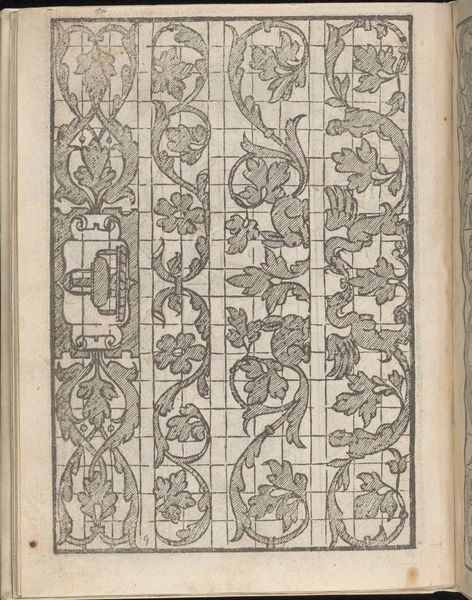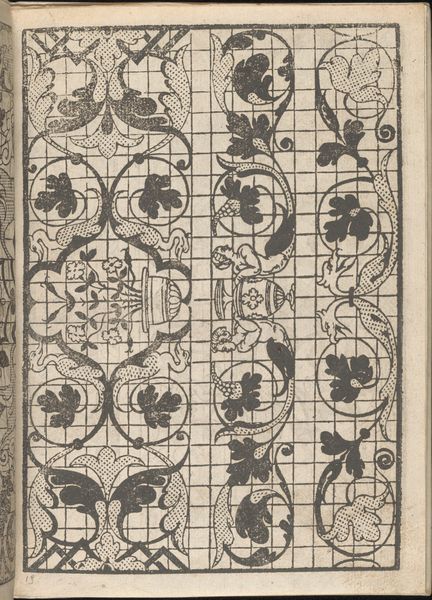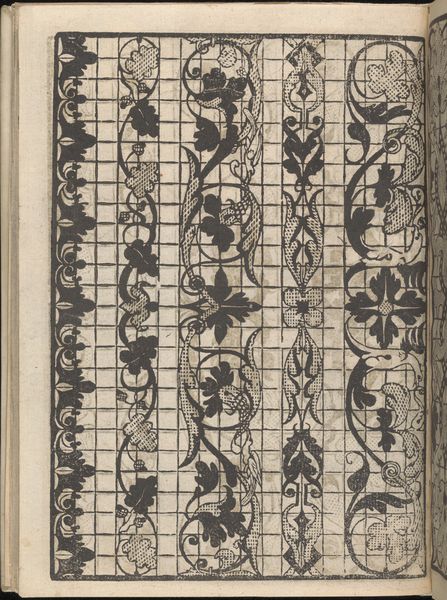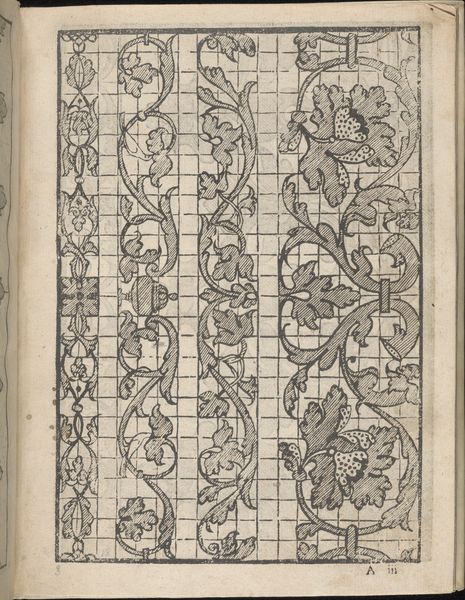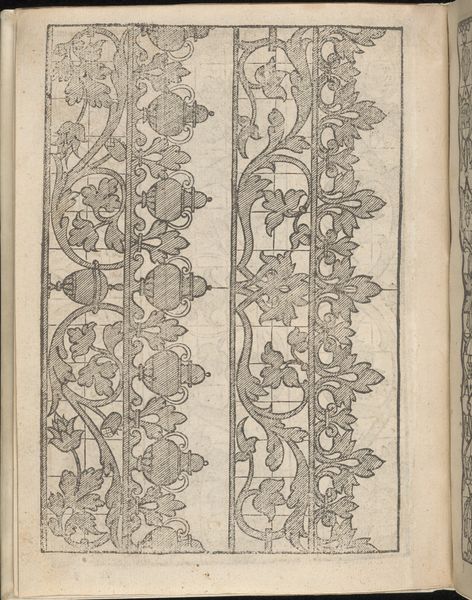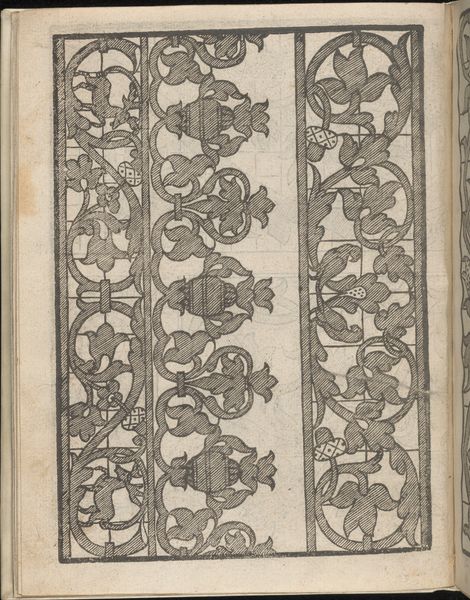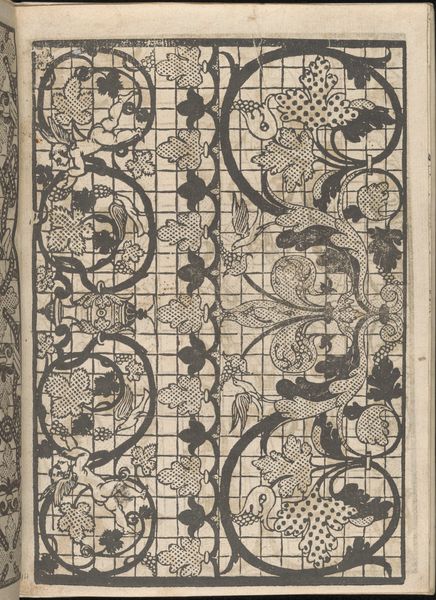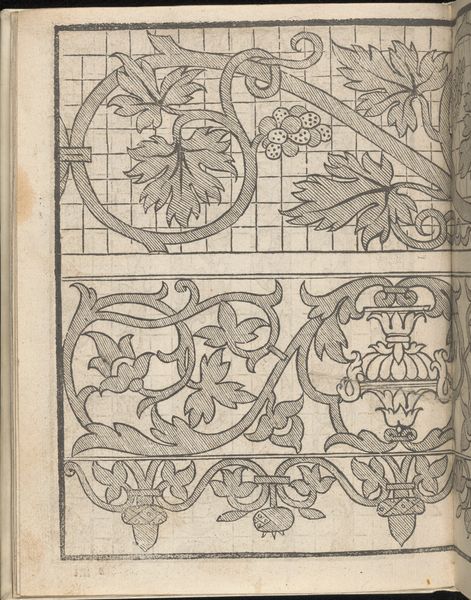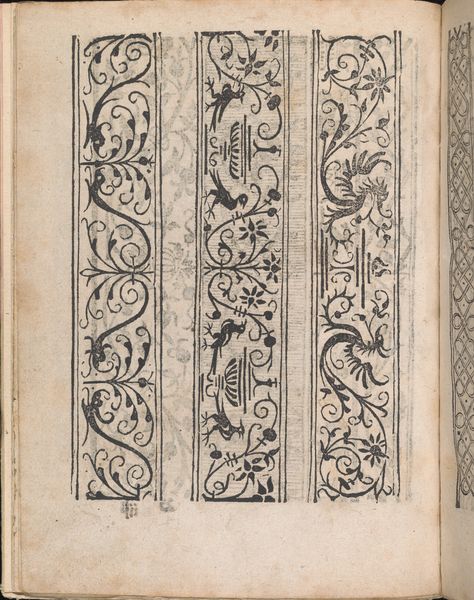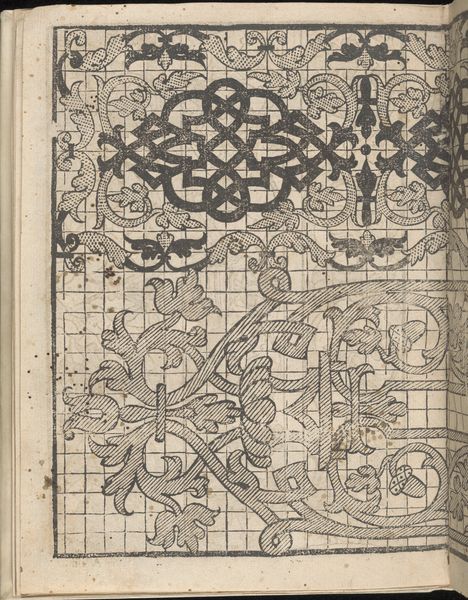
drawing, print, woodcut, engraving
#
drawing
#
medieval
#
pen drawing
# print
#
book
#
bird
#
11_renaissance
#
woodcut
#
line
#
engraving
Dimensions: Overall: 7 7/8 x 5 7/8 in. (20 x 15 cm)
Copyright: Public Domain
Curator: Page 11, Recto, from Iseppo Foresto’s *Lucidario di Recami,* made in 1564. We believe this design was produced as a woodcut, but potentially with some engraving. It resides here at The Met. Editor: My first impression is one of intricate order, almost like a codified natural world. The interplay of flora and fauna set within that strict grid is fascinating. Curator: Absolutely. Birds, foliage, what look like small animals - likely rabbits perhaps – all interwoven. These pattern books were designed to inspire and instruct artisans, with motifs that spoke to a wider cultural understanding of beauty and order. Notice the almost obsessive detail; how does that impact its significance as a functional object? Editor: It immediately speaks to craft production of the period. Woodcuts and engravings were, in effect, the blueprints for all sorts of decorative applications. It makes you think of the repetitive, skilled labor involved in translating these designs to textiles or other media. The design becomes a commodity, replicated across different materials by various hands. Curator: Precisely! Consider the book's title: "Lucidario," meaning "illuminator" or "guide." This implies both practical instruction and an unveiling of symbolic language. What meaning do you derive from the symbols themselves? What feelings do you think people were hoping to evoke through ornamentation at the time? Editor: I imagine it was all about elevating the status of mundane items, imbuing a chair or tapestry with sophistication that mirrored nature itself. I’m mostly captivated by how it translates artistic intention into something materially viable and distributable, especially considering this piece sits comfortably between art, craft, and industrialization. Curator: I appreciate how you center that practical aspect of art production in the context of cultural dissemination. It’s not enough to appreciate these artworks for their aesthetic impact without addressing the complex interaction with labor, market forces, and cultural expectation that were present during production of ornament. Editor: Well, beyond the lovely looping vines, those stark little boxes serve as a potent reminder of what's at stake when artists seek to translate their creativity into things we use and live with. Curator: Thank you for unpacking these considerations of value and labor; I will think of this so differently from now on.
Comments
No comments
Be the first to comment and join the conversation on the ultimate creative platform.
